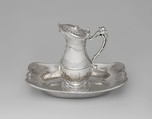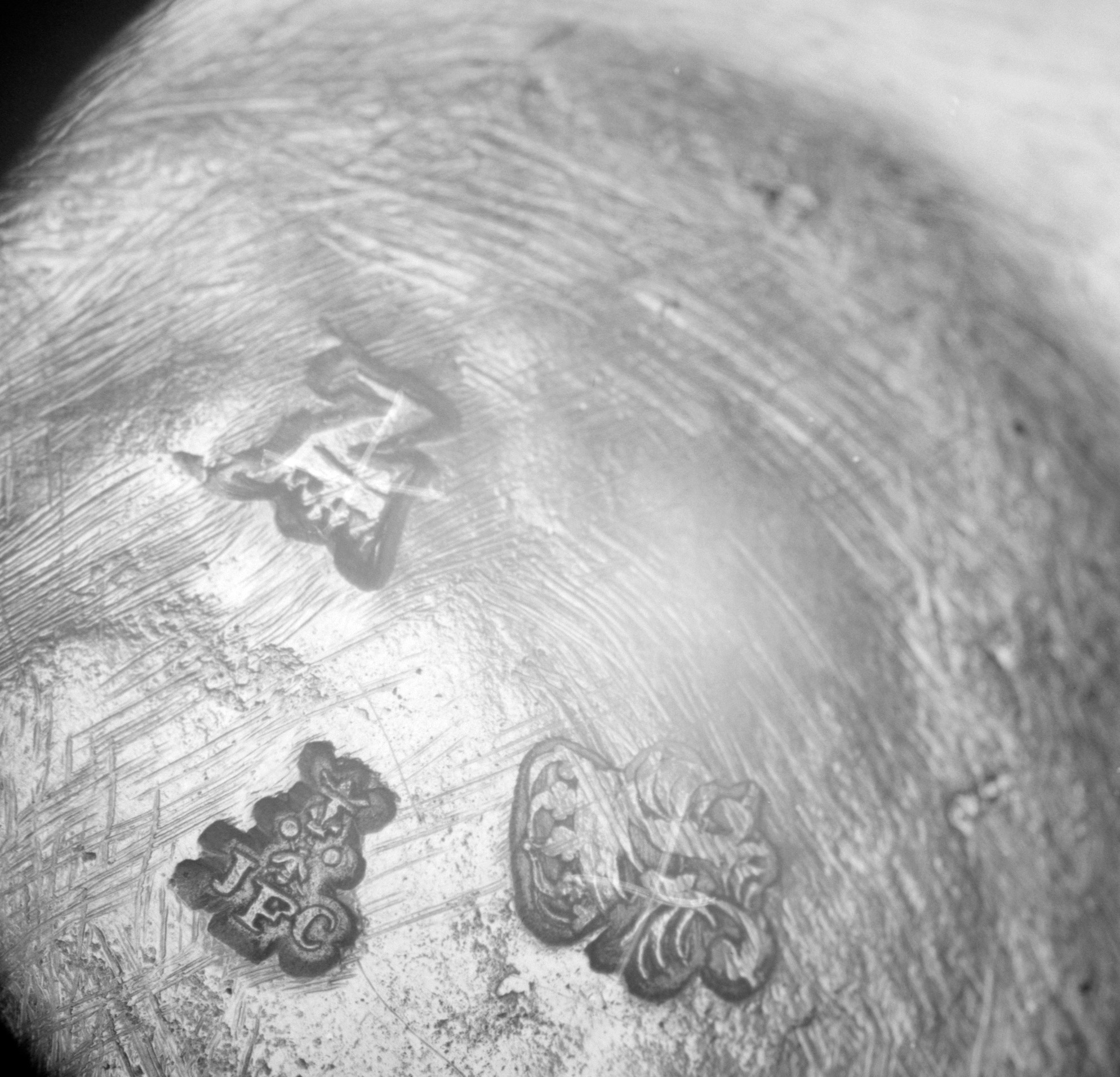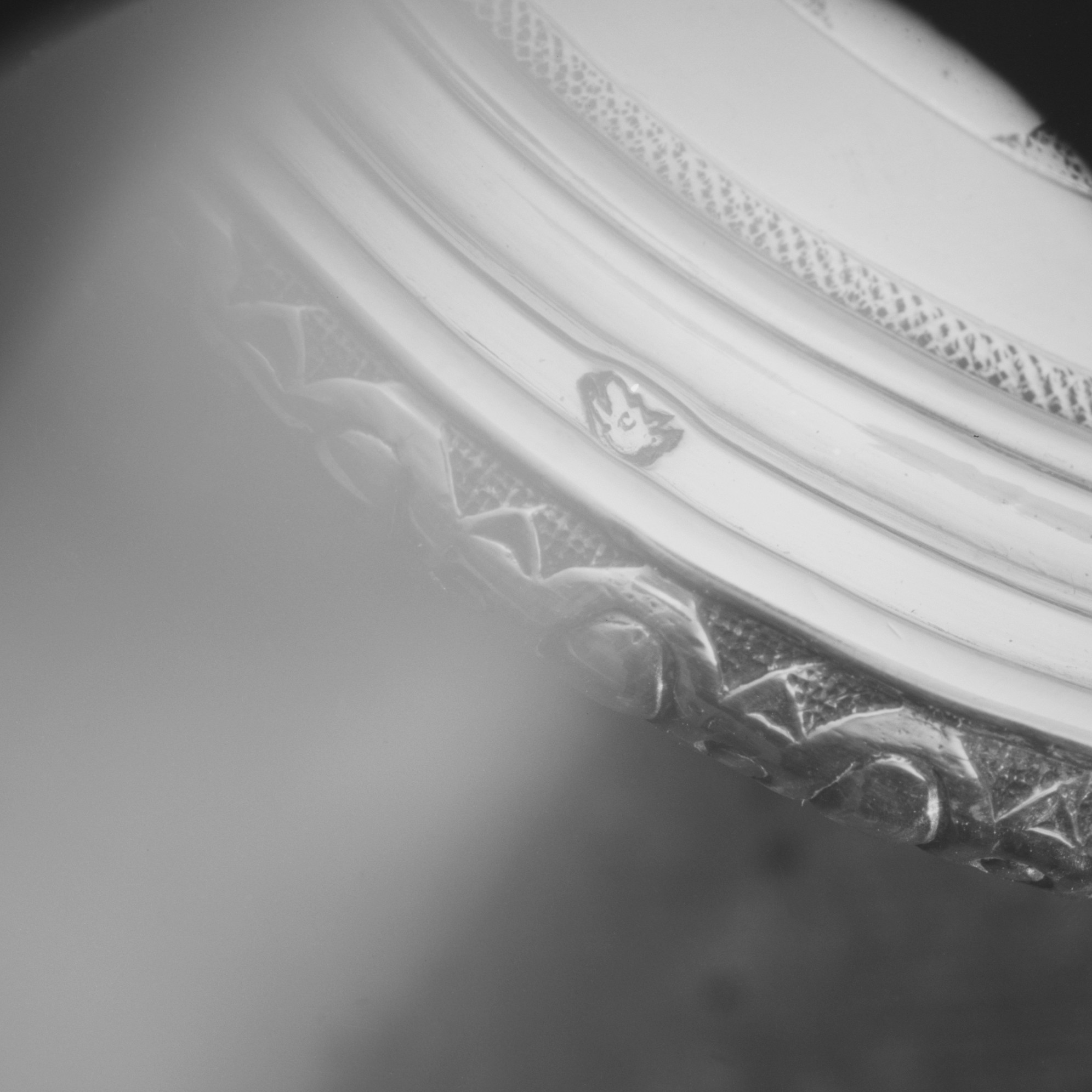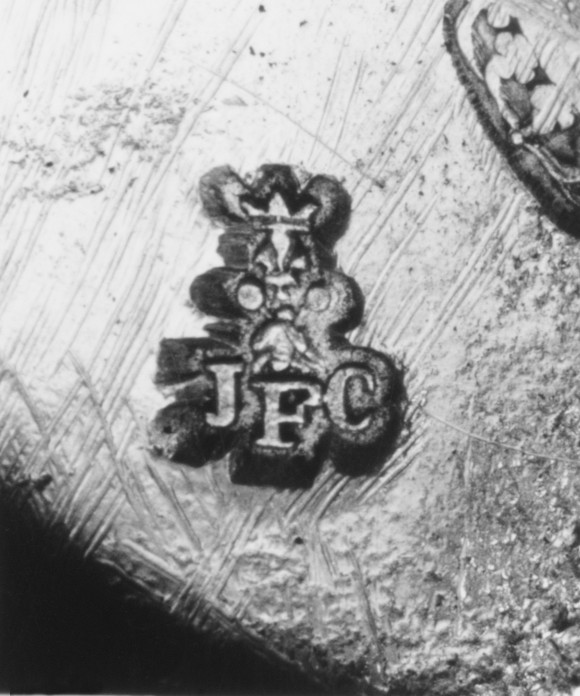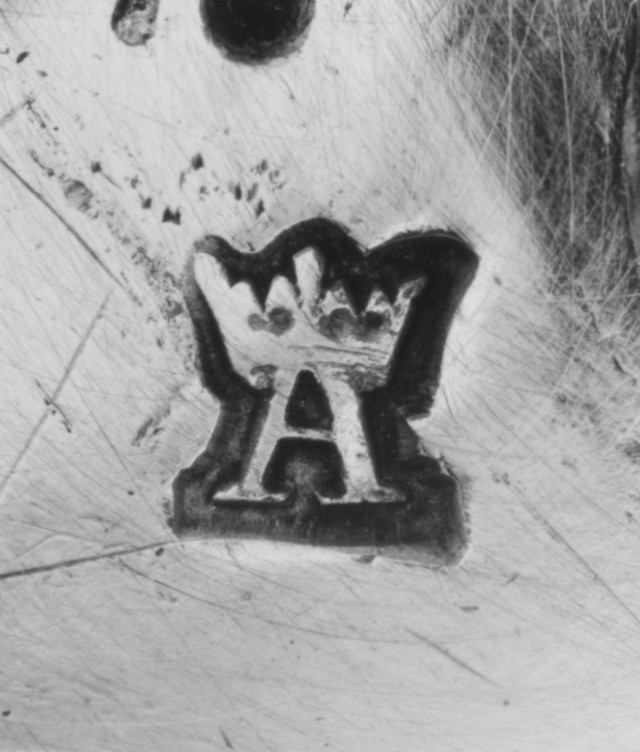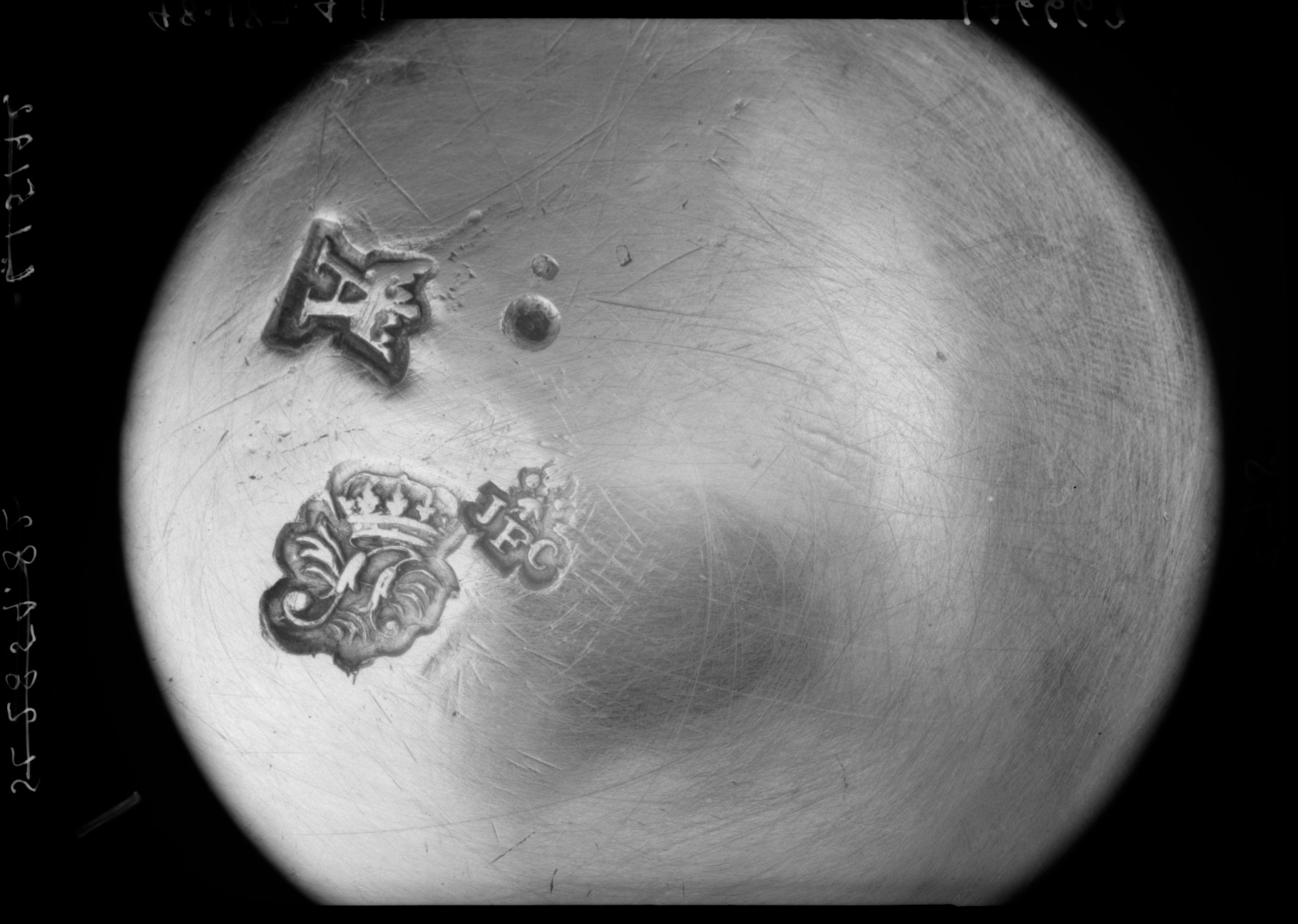Ewer and basin
Before the eighteenth century, custom called for the washing of hands at the table in a grand household. Often one servant held a basin for the diners while another poured water from a ewer. This practice was particularly important before the use of forks became widespread (see also 48.187.214, .215), but by the early eighteenth century, sets of matching forks, knives, and spoons were in common use. Thus, after about 1700 largescale ewers and basins were produced primarily for display purposes and would have been housed on a sideboard or a tiered buffet. By contrast, smaller ewers and basins such as this example were made for use as part of the toilette, the daily bathing and grooming ritual that took place in the bedroom.
The undulating line of the molded band at the neck of the ewer, the irregularly shaped cartouche beneath the spout, the molded swirling leaves on its cover, and the sinuous lines of the pierced handle show how the formal, highly organized decorative schemes of the preceding Régence period evolved into a new style in which curvilinear forms and the asymmetrical use of motifs derived from nature predominated. The snail on the handle of the ewer, its shell thumbpiece, and the undulating profile of the basin are other elements that reflect the influence of the new Rococo style, which reached its apex in the middle decades of the eighteenth century.
[Jeffrey H. Munger, 2010]
Due to rights restrictions, this image cannot be enlarged, viewed at full screen, or downloaded.
This artwork is meant to be viewed from right to left. Scroll left to view more.
